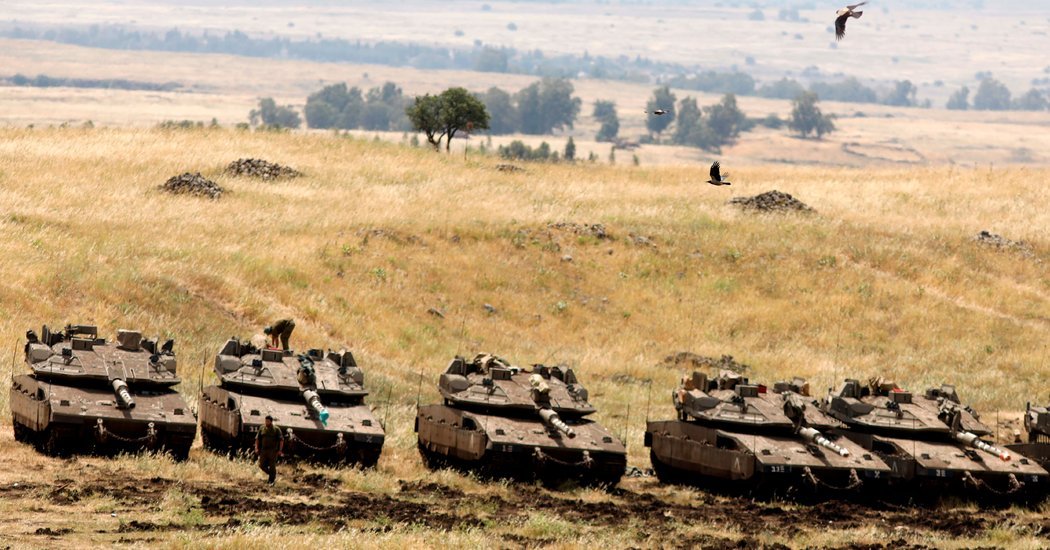The Israeli government rarely confirms individual strikes, and the Syrian government and Hezbollah do not always acknowledge when they have been hit. But last August, Maj. Gen. Amir Eshel, the departing commander of the Israeli Air Force, said Israel had launched nearly 100 strikes on convoys since 2012. But unlike Russia and Iran, Israel has done little to sway the outcome of Syria’s civil war.
“It didn’t have a horse in that race, feeling no love for Assad, but fearing the chaos that might follow him,” Mr. Sachs said. “Now, with the victory of the Assad-Iran side, Iran’s main spoils is a long-term military presence in Syria, entrenching it in the country and linking it to Lebanon. This is something Israel will not accept. It now fears the current trend in Syria, with growing Iranian presence, and so it has a strong incentive to stop things now before Iran gets further entrenched.”
Was Trump’s announcement a factor in the new fighting?
The conflict between Israel and Iran escalated days after President Trump announced the withdrawal of the United States from a 2015 multinational nuclear deal with Tehran. Israel had railed against the agreement since before its inception and Mr. Trump had campaigned on the promise of withdrawing from it.
The concern now is that the shadow war Israel and Iran have been waging for years, most recently in Syria under the cover of the civil war there, has now burst into the open.
“It’s not a proxy war. It’s a direct war and that’s what makes it particularly dangerous,” said Martin S. Indyk, a former United States ambassador to Israel. “Israel and Iran have been in a cold war for maybe 20 years now, but now it’s out in the open: direct, kinetic engagement between the forces, with Iranian casualties mounting. The potential for escalation is much greater now than before.”
He said that Mr. Trump’s announcement might not have helped, but that the stage for the conflict was set earlier this year. Iran pushed allied militias toward the Golan Heights and moved rockets and rocket production into Syria to better supply Hezbollah with more accurate weaponry. Iran also installed air-defense systems that can reach into Israel.
What happens now?
Mr. Sachs said fighting between Iran and Israel in Syria is likely to continue.
“This back and forth — an Iranian attack on Israeli posts on the Golan and a widespread Israeli response against numerous Iranian targets in Syria — was not a one-off flare-up or a case of hot heads prevailing,” he said. “This is part of a structural conflict unfolding between Israel and Iran in Syria.”








